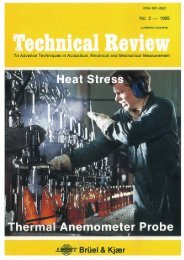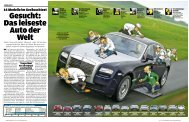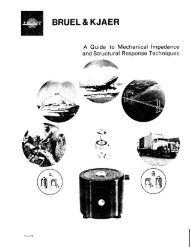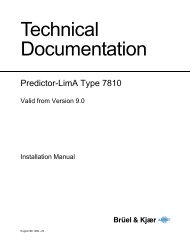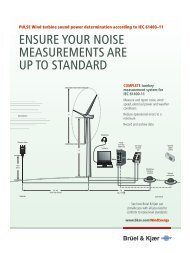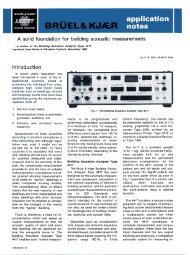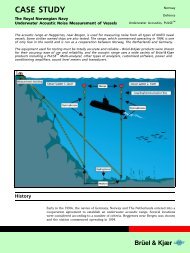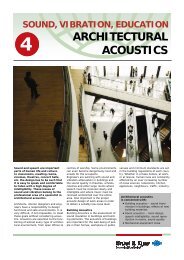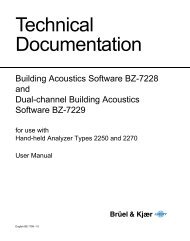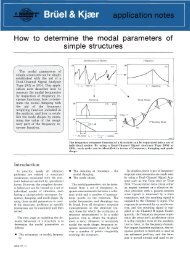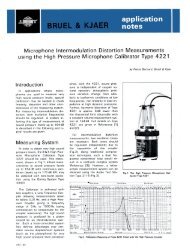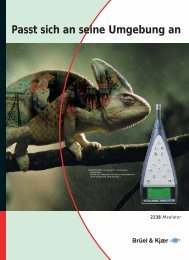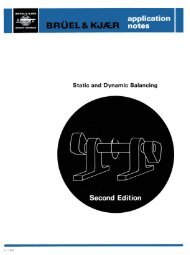Thyristors in Railway Traction How can their effects be measured?
Thyristors in Railway Traction How can their effects be measured?
Thyristors in Railway Traction How can their effects be measured?
Create successful ePaper yourself
Turn your PDF publications into a flip-book with our unique Google optimized e-Paper software.
Frequency analysis<br />
of thyristor traction<br />
One of the most important data reduction<br />
processes which an<br />
eng<strong>in</strong>eer engaged <strong>in</strong> commission<strong>in</strong>g<br />
or evaluat<strong>in</strong>g new thyristor controlled<br />
roll<strong>in</strong>g-stock is called upon to<br />
undertake is the analysis of the frequency<br />
content of the traction current<br />
or the <strong>in</strong>duced voltages <strong>in</strong> lightcurrent<br />
circuits. The audio-frequencies<br />
which are likely to <strong>be</strong> encountered<br />
<strong>in</strong> the traction supply are as<br />
follows.<br />
On AC electrified railways:<br />
1. the supply frequency and its exact<br />
harmonics, predom<strong>in</strong>antly<br />
odd harmonics<br />
2. slow transients conta<strong>in</strong><strong>in</strong>g a<br />
wide range of frequencies and<br />
some even harmonics of the supply,<br />
caused by traction transformer<br />
<strong>in</strong>rush or wheelslip correction<br />
On DC electrified railways:<br />
1. the chopp<strong>in</strong>g frequency, usually<br />
a few hundred Hz, and its exact<br />
harmonics, predom<strong>in</strong>antly odd<br />
2. the <strong>in</strong>dustrial frequency (50 to<br />
60 Hz) and its harmonics, ma<strong>in</strong>ly<br />
the 3rd, 6th and 12th, result<strong>in</strong>g<br />
from the substation rectifier used<br />
to provide the DC traction supply<br />
3. slow transients conta<strong>in</strong><strong>in</strong>g a<br />
spread of frequencies caused by<br />
l<strong>in</strong>e filter <strong>in</strong>rush at the clos<strong>in</strong>g of<br />
the circuit breakers on the tra<strong>in</strong>,<br />
or wheelslip correction<br />
Arrangement of equipment for plott<strong>in</strong>g spectra of L<strong>in</strong>e Current<br />
As an AC thyristor locomotive accelerates, the level of each harmonic fluctuates cyclically. The<br />
upper figure shows idealized plots, on a l<strong>in</strong>ear amplitude scale, of the levels of the first four odd<br />
harmonics as functions of phase advance, for a s<strong>in</strong>gle rectifier bridge (n = harmonic num<strong>be</strong>r).<br />
The lower figure shows the actual <strong>be</strong>haviour of eight selected harmonics, recorded as functions<br />
of armature voltage, on a logarithmic (dB) amplitude scale, for a two-bridge system, us<strong>in</strong>g a<br />
B & K Type 2031 Narrow Band Analyzer and a Type 2308 X—Y Recorder<br />
On both k<strong>in</strong>ds of electrification systems,<br />
some operators have vehicles<br />
propelled by commutatorless motors<br />
fed withcont<strong>in</strong>uously variable frequencies,<br />
usually obta<strong>in</strong>ed from the<br />
traction supply by thyristor <strong>in</strong>verters.<br />
These equipments <strong>can</strong> <strong>in</strong>ject<br />
currents <strong>in</strong>to the supply at harmonics<br />
of the <strong>in</strong>verter frequency, usu<br />
ally the 6th and its multiples.<br />
7



